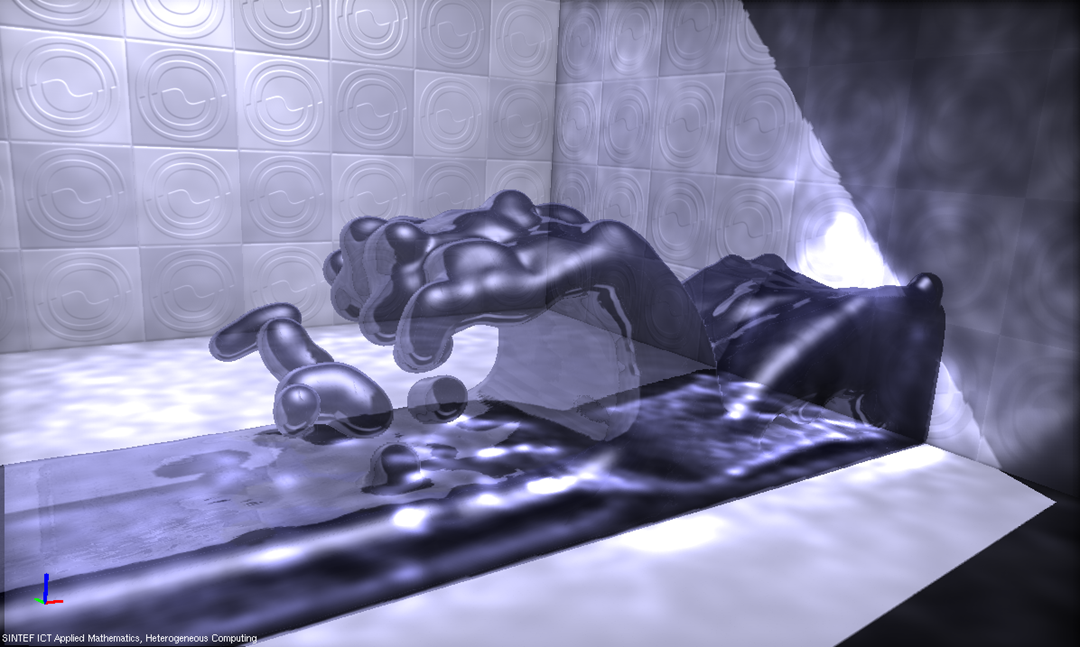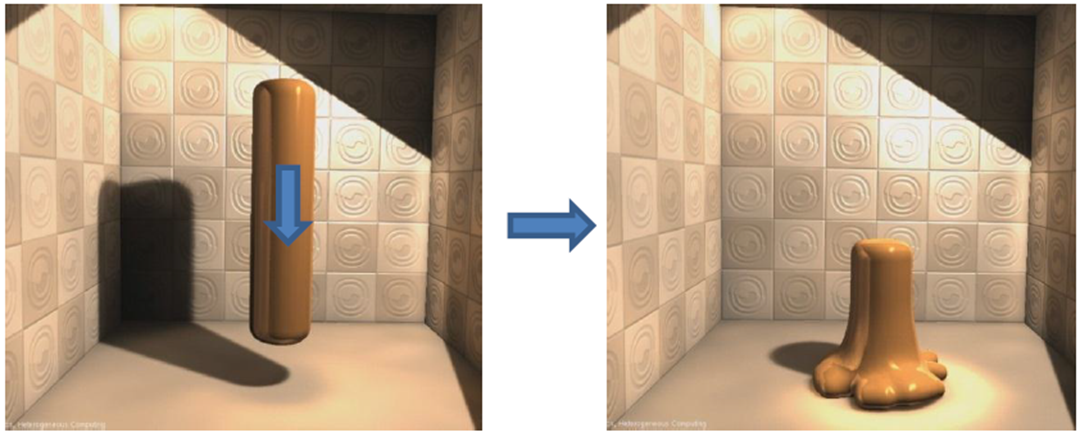GPU Computing
Contact persons

This page describes old research activity conducted in our previous "Heterogeneous computing" research group. The content is outdated and will be updated.
SPH on GPU
In the SCORE project we were responsible for GPU acceleration of the SPH simulations. In addition to this, we were heavily involved in the general SCORE code design and code development. The end result was an efficient GPU implementation supporting many complex simulations.


K. O. Lye, C. Dyken, J. S. Seland, F. O. Bjørnson, J. O. Busklein, T. Coudert, M. Føre, P. Klebert, A. Lavrov, B. Lund, J. O. Olsen, C. Pákozdi, P. Skjetne, W. Yang. Effective memory layout and accesses for the SPH method on the GPU, in: Proceedings 8th SPHERIC Workshop held in Trondheim (Norway), 2013. [ResearchGate]
Simulation on GPU
Medical Ultrasound
Medical ultrasound machines use advanced signal and image processing to produce the best possible image quality. GPUs is the prefferred computational resource due to their flexibility and floating point performance. We help our industrial partner to make good design choises and optimize their algorithms.


